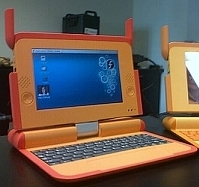While I've been harping for a while now that not even $140 million is the actual minimum costs, Atanu Dey worked numbers for us. To quote him:
The total costs then is the sum of the direct costs ($140), the maintenance costs ($35), the use costs ($25, say): $200. Let’s say that India buys only 2 million of those cute green machines. The cost: $400,000,000.Now as any good economist will tell you, there is a whole other cost we're not talking about here. Opportunity cost. What might that be? That's the cost of not spending the $400 million on Chinese manufacturing, middle-man distribution, and local maintenance.
Or as Atanu Dey so eloquently puts it:
Tens of millions of children don’t go to school, and of the many who do, they end up in schools that lack blackboards and in some cases even chalk. Government schools—especially in rural areas—are plagued with teacher absenteeism. The schools lack even the most rudimentary of facilities such as toilets (the lack of which is a major barrier to girl children.)And that's exactly why India passed on the OLPC. In his rejection, Education Ministry Secretary Sudeep Banerjee asked for the funds to be spent on universal secondary education.
Attention and funds need to be directed to those issues first before one starts buying laptops by the millions. Fact is that we need basic education (literacy, numeracy, etc) and secondary education. These have been provided very successfully without computers around the world.
Its only too bad that shiny, flashy, orange is more exciting to the public and the politicians than the time and labor intensive yet highly successful if invested in, existing public school system.


